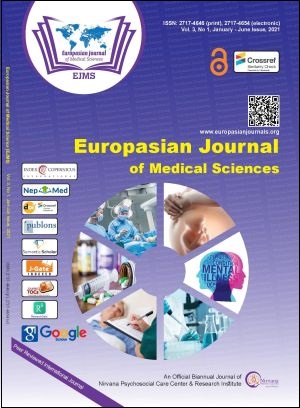Soon the Recovery will Likely be the Rule and Death will be an Exception in COVID-19
Keywords:
COVID-19, Deaths, Pandemic, Non-Pharmacological interventionsAbstract
Since the cluster of cases of SARS-CoV-2 first reported in December 2019, the number of COVID-19 cases and deaths have rapidly been rising but cumulative percentage of deaths has been decreasing from April 2020 globally and also in South Asian countries. Knowing the number of reported deaths during a period of the pandemic is not enough but knowing the number of excess deaths in a given population over the time may carry weight which is yet to be known globally. The COVID-19 pandemic may lead to increased deaths from some other communicable diseases such as Tuberculosis, dengue, and fewer deaths from some causes such as road accidents. Hence, both reported mortality figures and excess mortality figures are required to understand the death toll of the pandemic COVID-19.
Around one third patients are asymptomatic transmitting infection and among symptomatic, 80% has mild to moderate disease managed at outpatients settings in home isolation; 15% develop lower respiratory tract infection require hospitalization and recover; 3-5% need intensive care and may need ventilator support while 0.5-1% of patients may die.
We are of the opinion that in case of COVID-19, soon the recovery will likely be the rule and death will be an exception and our opinion is based on the facts of better understanding of COVID-19 infection and disease and its prevention, control and supportive treatment strategy even in the absence efficacious vaccine for prevention and effective medicine for cure and prophylaxis. The condition is that we have to continue to follow non-pharmacological interventions for containment and mitigation with true public health spirit.
Downloads
Downloads
Published
How to Cite
Issue
Section
License
Copyright (c) 2021 Rano Mal Piryani, Suneel Piryani, Ganesh Dangal, Muzaherul Huq

This work is licensed under a Creative Commons Attribution 4.0 International License.
The author(s) retain the ownership of the copyrights for their work published in EJMS without any restrictions. Upon submission, the author(s) grants EJMS a license to publish, including to display, store, copy, and reuse the published content.
License to Publish
By submitting a manuscript to EJMS, the author(s) grant the journal a non-exclusive license to:
- Publish and distribute the content in all formats, media, and platforms (both existing and future), while identifying EJMS as the original publisher.
- Reproduce, display, and store the content in both print and online formats, including institutional and digital repositories.
- Translate, adapt, and summarize the work, including reprints, extracts, and abstracts.
- Develop derivative works based on the original content.
- Include the work in electronic databases and provide links to third-party materials.
Creative Commons Licensing
In addition to EJMS’s publishing rights, authors grant third parties the right to use, share, and distribute their work under the Creative Commons Attribution 4.0 (CC BY 4.0) International License. This allows unrestricted use of the content, provided proper attribution is given to the original author(s) and the journal.

